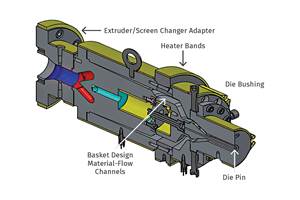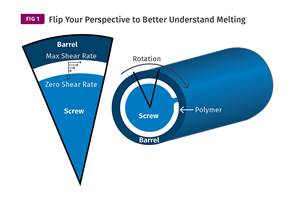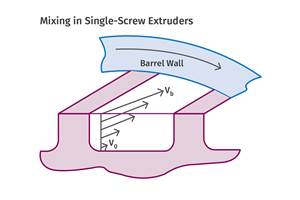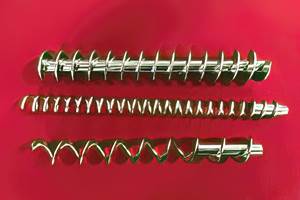New Look in PVC Siding
Tom Loper is a serial entrepreneur. Currently, he’s president, CEO, and co-founder of NuCedar Mills Inc. in Chicopee, Mass., which makes the first foamed PVC siding on the market.
Tom Loper is a serial entrepreneur. Currently, he’s president, CEO, and co-founder of NuCedar Mills Inc. in Chicopee, Mass., which makes the first foamed PVC siding on the market (see Learn More). Loper started out in internal consulting for large companies. He also manufactured office
supplies at Dennison Mfg. Co., helped sell office furniture at Herman Miller, and designed a high-tech call center for Lifeline Systems. Then he struck out on his own.
Loper founded NuCedar with partner Andrew Sears in 2006. It was Loper’s third venture and his second with Sears, who is president of New England Lumber Specialties in West Springfield, Mass. Three years earlier, Sears and Loper had invested in Kleer Lumber LLC in Westfield, Mass., one of the early makers of foamed PVC trim boards, which proved a strong growth market. Loper was president of Kleer, which extrudes foamed PVC sheet that is cut into trim boards.
A NEW IDEA FOR SIDING
At Kleer, Loper and Sears had the idea of milling foamed PVC sheet into siding. They figured if trim was big, siding would be even bigger, since there is four to five times more siding on a house than trim. But two other Kleer partners wanted to stick with trim boards.
Loper and Sears left to set up NuCedar and developed siding from PVC foam sheet. NuCedar uses a special “micro-milling” process to replicate beveled cedar siding. Loper explains, “We can mill at 200 ft/min. That’s much faster than we could extrude.” Dust from milling is captured and sold to local PVC sheet extruders.
Loper didn’t want to invest in extruding his own foamed sheet. But the venture-capital firm they approached for financing didn’t think there would be enough merchant capacity for foamed PVC sheet in the U.S. if foamed siding took off. U.S. producers of foamed sheet were already backlogged to meet trim-board demand.
Fortunately, Jain Irrigation Systems Ltd. in Jalgaon, India, had a sales office in Columbus, Ohio. Jain had 16 Milacron conical twin-screws and was willing to commit to support the new siding venture. Jain also wanted a controlling interest in the technology. In 2006 Jain bought 51% of NuCedar.
ANY COLOR YOU WANT
Foam isn’t the only new aspect of the upscale NuCedar siding. It’s sold pre-painted in a choice of three whites, 19 standard colors, and over 1400 custom colors. The two-part urethane paint, developed by Sherwin-Williams, is more like auto-body paint than house paint, Loper says. It contains costly solar-reflective pigments to permit the use of darker colors, reduce fading, and keep the house cool in hot weather. The product carries a lifetime warranty on coating and substrate.
Pre-finished NuCedar siding is only slightly less expensive than real painted cedar. NuCedar costs one-third more than unfinished fiber cement and at least twice as much as most PVC siding.
NuCedar started full production in February 2007, and for the first year sold siding house by house through distributors in the Northeast and Canada. Since then, distribution has expanded to the Southeast. So far, Loper says, the construction slump hasn’t hurt NuCedar. Its sales are divided about evenly between new construction and remodeling. “We’re really pleased with remodeling,” he adds. “We’re getting gorgeous multi-million-dollar homes.”
Related Content
How to Select the Right Tooling for Pipe Extrusion
In pipe extrusion, selecting or building a complementary set of tooling often poses challenges due to a range of qualitative factors. Here’s some guidance to help you out.
Read MoreUnderstanding Melting in Single-Screw Extruders
You can better visualize the melting process by “flipping” the observation point so the barrel appears to be turning clockwise around a stationary screw.
Read MoreSingle vs. Twin-Screw Extruders: Why Mixing is Different
There have been many attempts to provide twin-screw-like mixing in singles, but except at very limited outputs none have been adequate. The odds of future success are long due to the inherent differences in the equipment types.
Read MoreWhat to Know About Your Materials When Choosing a Feeder
Feeder performance is crucial to operating extrusion and compounding lines. And consistent, reliable feeding depends in large part on selecting a feeder compatible with the materials and additives you intend to process. Follow these tips to analyze your feeder requirements.
Read MoreRead Next
Beyond Prototypes: 8 Ways the Plastics Industry Is Using 3D Printing
Plastics processors are finding applications for 3D printing around the plant and across the supply chain. Here are 8 examples to look for at NPE2024.
Read MoreMaking the Circular Economy a Reality
Driven by brand owner demands and new worldwide legislation, the entire supply chain is working toward the shift to circularity, with some evidence the circular economy has already begun.
Read MoreFor PLASTICS' CEO Seaholm, NPE to Shine Light on Sustainability Successes
With advocacy, communication and sustainability as three main pillars, Seaholm leads a trade association to NPE that ‘is more active today than we have ever been.’
Read More











